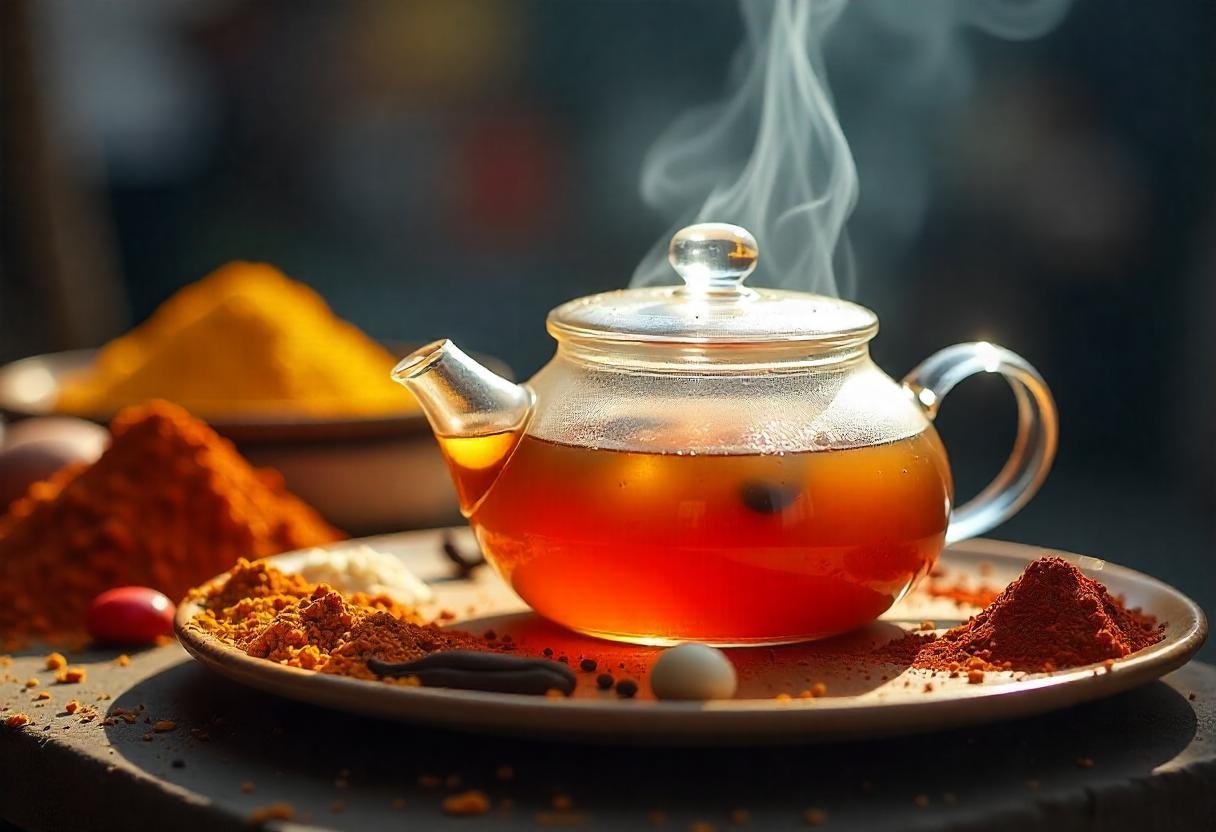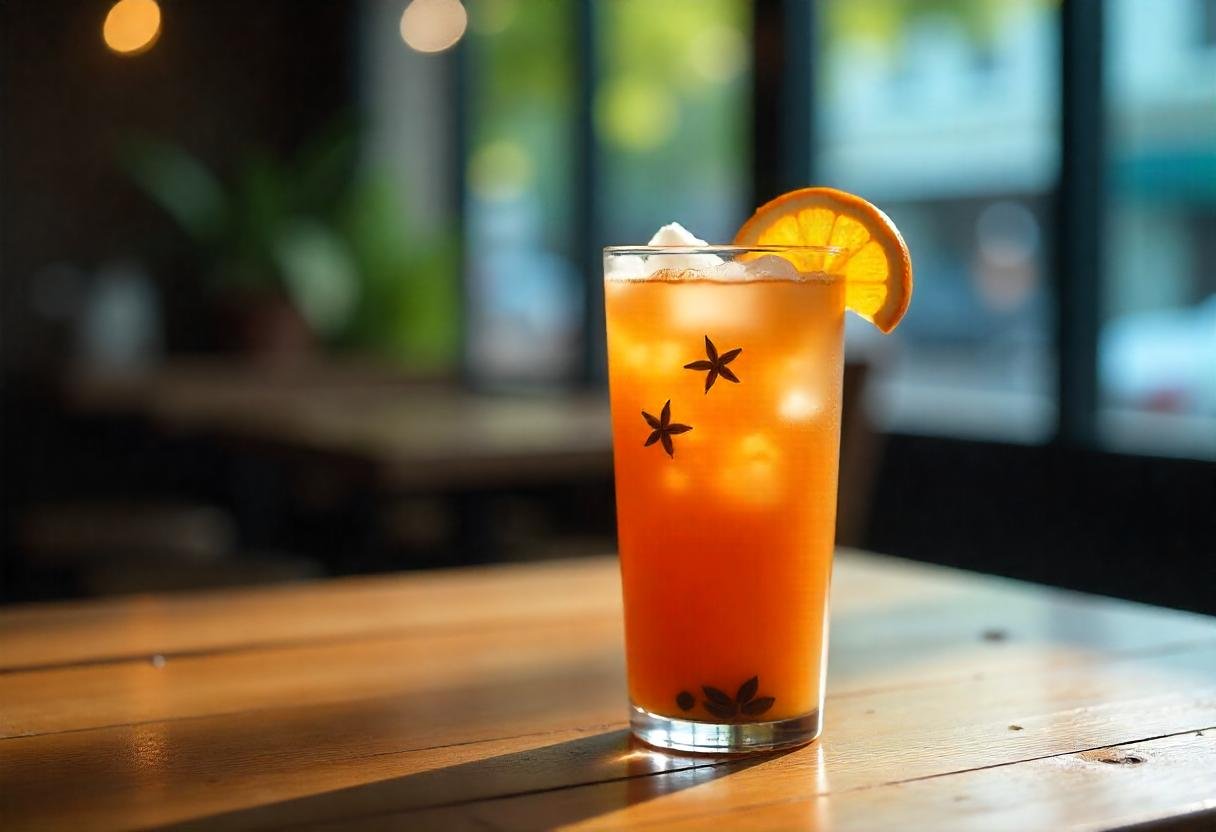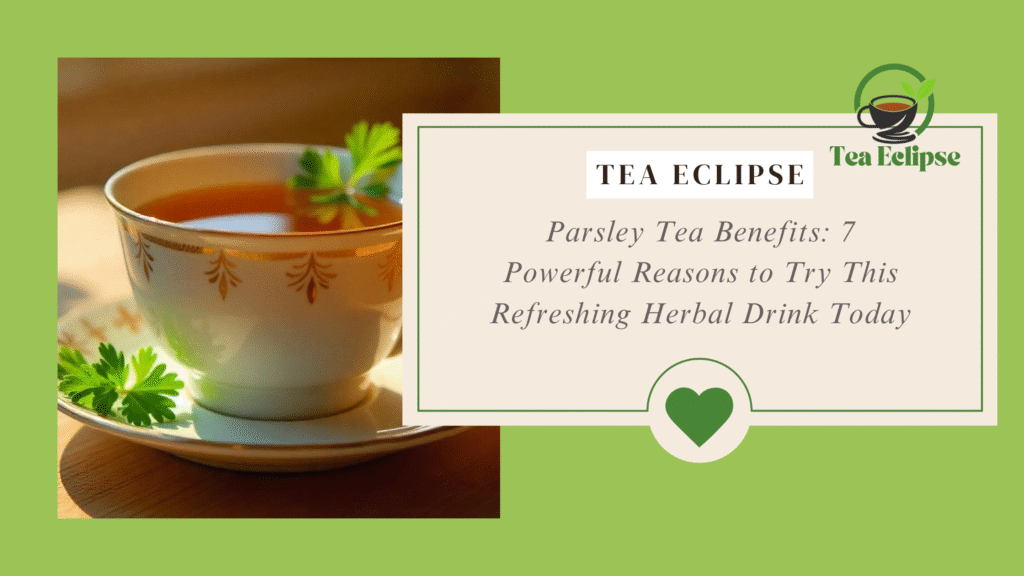Table of Contents
Introduction: Unlock the Full Flavor of Thai Tea
There can hardly be a cola as easily identifiable as Thai tea. Considered to be one of the best iconic drinks, its daring orange color, creamy sweetness, coupled with the rich smell, make it a perfect treat of balance between tradition and decadence. Never mind whether you like the way it is served halfway through, melted ice with a dollop of condensed milk, or like a less intensively-made beverage, Thai tea is an experience of its own that would be difficult to forget.

The best thing, though, is to drink Thai tea, but not the kind that is just thrown around and treated as that powder that can be mixed with milk. The process to brew them successfully and add adjustments to your unique taste or lifestyle requires a bit of knowledge and expertise. Whether you want to take your various Thai teas to the next level or you want the best ingredients to start with, there are a number of professional secrets that will up your Thai tea game.
Whether you use Thai tea to drink at home, serve visitors some, or are just enjoying it as part of your daily routine, in this guide, we will go into 7 tips and tricks you can use to make the experience of using Thai tea that much better. Prepare to drink smarter, mix with a stronger role, and serve like an expert.
So, get down to it!
1. Choose Authentic Thai Tea Mix for True Flavor
When you want to have Thai tea as it is served in Thai restaurants or street stalls, then you have to begin with a quality, good, and authentic Thai tea mix. Not every blend is made the same, very fine with artificial colorings and low-quality leaves, every dull one has a diversity that gives a richer, superior flavor to the tongue with a pleasurable scent.
How to Identify a Quality Thai Tea Blend
Look for these key features when shopping for Thai tea:
- Color brewed: orange-red (not brownish or muddy)
- A potent black tea leaf foundation (normally Ceylon or Assam)
- Vanilla, tamarind, or star anise (not too strong, subdued rather than obnoxious)
- Low-artificial components
The interesting characteristic of most traditional Thai tea mixes is also the tinge of spices or the bite of natural flavoring that makes Thai tea so flavorful and fragrant.
Difference Between Commercial Mixes and Traditional Recipes
- Thai Tea Mixes– It is available commercially, and is handily available and readily available; it usually contains black tea, food coloring (examples of food color include FD&C Yellow 6), and flavoring. They are quick and reliable, but when they are poorly prepared, they may taste artificial.
- Typical Thai Tea Recipes: A self-made drink of black tea and a bunch of spices (star anise, cardamom, cinnamon, vanilla), and a sweetener (natural). The effortful blends have higher flavor and have a greater sense of control among ingredients.
Pro Tip: Food dyes do cause many to be sensitive to them, so in case you are sensitive to foods or want to be more natural, you can make your own substitute, just black loose-leaf tea with whole spices.
Recommended Brands and What to Avoid
Popular Authentic Brands:
- Pantai Norasingh Thai Tea Mix is Genuine and common in Thai kitchens
- Number One Brand (ChaTraMue) The best Thai tea in the world, which has the taste of restaurant tea
- Wangderm Thai Tea quality with few additives, at a strong, solid, natural level
Avoid:
- Unbranded or overly cheap mixes that are not labeled in English or that are not labeled in Thai
- Artificial coloring of the product or so-called flavor dust (nonexistent tea leaves)
2. Master the Art of Brewing Thai Tea
After choosing the appropriate Thai tea combination, it is extremely crucial that it be adequately brewed in order to release its optimum taste. Thai tea must be strong, not sweet, and not watery or bitter. The proper technique will keep its aromatic nature and distinctive color.
Water Temperature, Steeping Time, and Proportions
- Water Temperature: Just off the boil: about 195 to 205 o F (90 to 96 o C). The delicate tea leaves and spices can be burned when you boil water, thus leading to bitterness.
- The ratio of Tea to Water: 2 tablespoons Thai tea mix per 1 cup of water. Add to taste, but do NOT undermeasure it or you will overfeed on a weak infusion.
- Steeping Time: 3 to 5 minutes. Not long enough and you will lack body; on the other hand, it may be too tannic or astringent.
Pro Tip: The tea must be strained using a fine mesh sieve or a cloth made of cheese to eliminate any tea particles to have a clear, smooth base after brewing.
Tips for Strong, Aromatic Flavor Without Bitterness
- Some Suggestions to a Powerful, Fragrant Flavour, without Bitterness
- Improper brewing should be avoided. Rather, when you want a stronger tea, take more tea mix, not time.
- Mix in the steeping to extract the flavor uniformly.
You will have done it right when the tea is of a vivid orange color, has a slight spice smell, and has a vigorous, slightly malty flavor even before having milk and sugar added.
Avoiding a Watered-Down Taste
- Never add the ice to the Thai tea, as this water will melt the ice. Always chill the Thai tea and then add the ice, preferably iced Thai tea. When hot tea is poured over ice, it will be diluted instantly.
- But it depends on your preference. If you like it cold, make it concentrated with less water in it, so it should be in balance when you pour ice into it.
Optional upgrade: Once you have some leftover Thai tea, freeze it in an ice cube tray and use the frozen cubes of Thai tea in a drink so it will not be watered down.
3. Use the Right Sweeteners for Balanced Richness

A thick, creamy, yummy sweetness is one of the most signature parts of Thai tea. It is not only a matter of sugar, but also of moderation, that thick coat of milky goodness is about. The type of sweetener used can take your Thai tea to the level of decadent, and at the same time, it gives you flexibility to be health conscious and dietary needs.
The Role of Sweetened Condensed Milk vs. Evaporated Milk
Thai tea is usually sweetened up with a mixture of sweetened condensed milk and evaporated milk, making it creamy:
- Sweetened Condensed Milk: Thick, sugary, and rich is the hallmark of condensed milk that makes Thai tea so velvety and taste like caramel. A couple of spoonfuls are enough.
- Evaporated Milk: It is less sweet, thinner, and fluid. It is regularly added on top to make that beautiful layering in Thai iced tea, and has a creamy addition that does not overpower the taste.
Traditional tip: if you want to achieve that street-style touch, then employ it both ways: use condensed milk as the base sweetener, and evaporated milk in the finishing touch
Coconut Milk or Dairy-Free Options for Vegan Versions
If you’re vegan or lactose-intolerant, don’t worry—you can still enjoy Thai tea without sacrificing flavor:
- Coconut Milk (or Cream): Adds richness with a tropical twist. Use full-fat for best results.
- Oat Milk: Neutral with creaminess, ideal to get a smoother, balanced profile.
- Almond Milk: Creamy, but light, nutty with less creaminess.
- Sweetened vegan Coconut Condensed Milk: You can readily obtain it at health stores or the Asian store; it tastes and is about the same thickness as regular condensed milk.
Pro tip: Go with unsweetened plant milks when you control balance with an extra sweetener.
How to Adjust Sweetness Without Losing Authenticity
- Take a dose a little and sweeten to taste. Thailand tea is sweet, but you should not overdo it.
- Add condensed milk to a dribble of honey or maple syrup instead.
- Choose stevia or monk fruit as a low-calorie alternative, with care to avoid aftertaste by.
- When made in batches, sweeten when the tea is hot to provide a better blend.
With this trick, you will have Thai tea in just the way you like: rich and creamy, light and herby, or even vegan without sacrificing its deliciousness and reliability.
4. Serve It Iced for Maximum Refreshment
It is perhaps the most famous Thai tea in a cold infusion of cold, sweet, and milk poured over ice. Iced Thai tea does not consist only of getting rid of the heat but rather the art of presentation, texture, and flavor manipulation. So the next time you want to take another photo-friendly, Instagram-worthy glass, remind me, and we can make it just as tasty.
Traditional Thai Iced Tea Presentation
The classic Thai iced tea, or “Cha Yen”, is all about layers:
- Use power-brewed Thai tea with condensed milk added to it
- Pour into a tall glass filled with crushed ice or ice cubes
- Lightly shower some evaporated milk (or coconut milk) on the surface
- Watch it fall into lovely orange and white swirls
- Whisk prior to drinking
Bonus tip: Serve in a large straw or long spoon in order that the drink may be stirred at the table, a nice little touch, but an important one.
Glassware, Ice Type, and Layering Tips
- Glassware: Place a bold drink with an orange color in glasses that will display the attractive look of a drink, which as clear highball glasses or tall tumblers.
- Ice: Tiny pieces or crushed ice are preferre;d it will cool the tea soon and provide a nice crunch
- Layering: Add milk a very little at a time over the top of a spoon to produce the trademark floating layer effect
To give a high appearance, add a sprig of mint, star anise, or even a cinnamon stick to add aroma and contrast.
How to Prevent Dilution and Preserve Flavor
- Put the tea in the refrigerator, then ice it. Hot tea poured over ice will immediately be diluted.
- Prepare Thai tea ice cubes beforehand- save some of the steeping of the tea and freeze it in an ice tray to maintain flavor in ice-cold form
- Add a tea brew (strong tea) in case you are to serve it with much ice
Such an approach guarantees that you will end up with the sip that is bursting with flavor, from the first gulp to the last drop, not a single drop of water will be left.
5. Add Spices and Enhancements for Depth
Although Thai tea is already full-flavored because of its spiced black tea grounds, a touch of several aromatic notes can make the tea reach new levels. With all these custom add-ons, you can create your own unique adaptation of Thai tea, which is either of individual, seasonal, or gourmet taste, yet does not appear to be lacking in overall flavoring sense.
Cinnamon, Star Anise, or Vanilla for Extra Warmth
- Cinnamon: A slice of cinnamon, which is incorporated in the process of brewing, lends us that much-needed sweetness and fullness to the brew.
- Star Anise: Star Anise is a common spice in Thai and Vietnamese tea mix that produces a warm taste of licorice.
- Vanilla Bean or Vanilla Extract: Smoothes out the edges of the tea with smooth creaminess- great to add to a winter Thai tea or a dessert-type of Thai tea.
Pro Tip: Add whole spices during steeping, and discard them after to end up with a smooth, fine flavor, without getting grainy and bitter.
Orange Blossom or Cardamom for Exotic Twists
- Orange blossom water: Adds just a few drops to add a flowery, citrusy lift that sets off the richness of the condensed milk so well.
- Cardamom: Gives an earthy-sweet (with a hint of peppery) taste – popular in chai-style blending and Middle Eastern teas.
The additions are good to use when you want to spoil your guests or, alternatively, when you want to make your Thai tea a luxurious experience and do not want to make it too complicated.
How to Infuse Subtle Complexity Without Overpowering
- Less is more: Always begin with a small quantity of any spice (a pinch, a drop, or a pod only)
- Be selective when mixing the ingredients: Be selective in using the additions, no more than one or two at a time, so that the Thai tea taste is not altered too much
- Steeped in the tea, not on top: This prevents the flavors from tasting stacked up and unnatural in their flavors
6. Pair Thai Tea with the Right Foods
Thai tea is an excellent drink on its own, and it also makes the best partner with spicy food and tasty desserts. It is sweetly creamy and with enormous tea (black) grounds, making it one of the best palate levelers, particularly when in combination with spicy, fatty, or crunchy foods.
Perfect Food Pairings: Spicy Thai Dishes, Pastries, or Fruit
- Hot Thai Food: Image pad Thai, green curry, or tom yum. Thai tea leaves the palate refreshed and cools down the heat cooling down.
- Pastries and Before Goods: Croissants, puff pastry, or fried banana rolls are to go hand in hand with the creaminess in the tea.
- Fresh Fruits: Mango, pineapple, or lychee pair light and tropical flavors, and really well with iced Thai tea.
- The Thai Tea Hot and Spicy Balance
How Thai Tea Balances Heat and Spice
- The milk constituent counterbalances the spiciness, and hence, a perfect drink after or in between spicy meals
- The taste of sweets covers the tongue, relieving the chili character strength or pepperiness of the food.
- The fact that it is cool when iced provides a contrasting sensory appeal to the hot, spicy essence of food
Fun fact: in Thai restaurants, a meal is usually followed by Thai tea as a pleasant final touch that may calm down the stomach and calm down the taste buds.
Hosting Ideas for Thai-Inspired Tea Breaks
- Offer bite-sized spring rolls, spicy peanut snacks, or mango sticky rice with small glasses of Thai tea
- Serve as an iced drink and a hot drink with a choice of toppings or sweeteners
- Have a tea bar and add-ins (butter, vanilla, cardamom, cinnamon) where guests can make their own tea cup
7. Customize Thai Tea for Health and Dietary Needs

You like Thai tea and want to avoid taking too much sugar, dairy products, or taste it in the afternoon when caffeine does not work so well? No problem. Simple substitution can help you include Thai tea in your healthy lifestyle.
Low-Sugar and Non-Dairy Alternatives
- Use unsweetened plant milks like oat, almond, or coconut
- Replace condensed milk with coconut condensed milk or homemade cashew cream
- Use monk fruit, stevia, or agave for sweetness without blood sugar spikes
Tip: Add less and go heavy. Thai tea on its own is very flavorful, so it really is not necessary to add excessive sugar to brew it.
Herbal or Decaf Versions for Late-Night Enjoyment
- Use decaffeinated teas like black tea combinations or Thai teas using rooibos.
- You may also brew Thai tea spices (such as star anise and cinnamon) on herbal bases in order to replicate the taste
- Ideal to have during an evening ritual or post-dinner wind-downs
Tips for Making Thai Tea Part of a Wellness Routine
- Midday refresher: Thai tea is unsweetened and refreshing, no crash of caffeine hit
- Consider drinking iced Thai tea as a low-calorie substitute for desserts
- Use natural, clean-label blends or home-made spice blends rather than artificial mixes
With a couple of small changes, you can still have Thai tea but in a good way that is diet-conscious, taste-free, and fully delightful.
Conclusion
Thai tea is not only a creamy and sweet beverage, but a tasty experience, containing traditions, comfort, and imagination. Whether you have already followed it or it is your first time to be familiar with it, these 7 pro tips can assist you in experiencing it in absolutely new ways:
- Buy a Thai tea bouquet
- Master your brewing method
- Choose tempered sweeteners and dairy (or non-dairy) alternatives
- It is best served to be iced down
- Put in spices and additions to be enveloping
- Combine with the appropriate foods to get harmony
- Adjust to health and diet issues
Dividing into these techniques, you may turn Thai tea into a personified act of taking care of yourself and the material that you can reproduce at home. You like it strong and conventional, or you prefer it subtle and vegan, the delicious Thai tea is available in all varieties.
Explore More Details – Click to Learn!
Therefore, brew a cup, get your creative juices going on and enjoy your every drop!
FAQs
Q1: What is Thai-Tea?
Thai tea originated in Thailand and is also known as strong black tea (usually Ceylon or Assam, but occasionally orange blossom or vanilla) mixed with spices, usually star anise. It gets sweetened with condensed milk and served with evaporated milk on top, which makes it creamy. Other commercial blends could also contain the use of food coloring to obtain the typical orange color.
Q2: Is the Thai tea rich in caffeine?
To this, the answer is yes, Thai tea contains moderate and high amounts of coffee, and this depends on the kind of black tea and the strength that person has brewed the tea is brewed. Or, when you are too sensitive to caffeine, or serve it at night, you may add a decaf blend or one herb-based, like rooibos with Thai-type spices.
Q3: Do you have Thai tea minus condensed milk?
Absolutely. To make it lighter or dairy-free, you can substitute:
- coconut milk + maple syrup or agave
- Vanilla with a smack of oat milk
- Non-dairy vegan condensed milk (can be found in specialty shops or Asian groceries)
With the use of these options, you could always make the Thai tea less sugary, less calorie-dense, or even dairy-free without reducing the taste of the tea.



